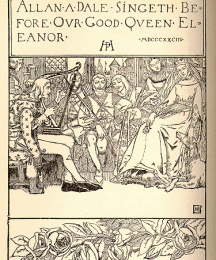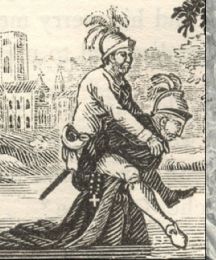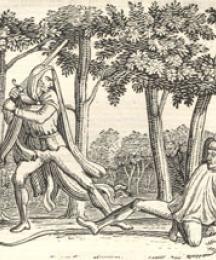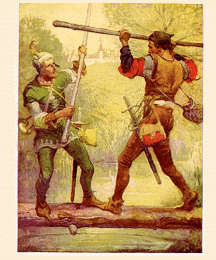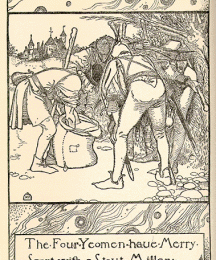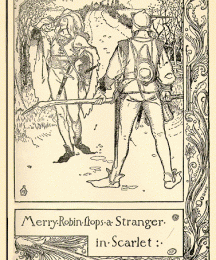Robbins Library Digital Projects Announcement: We are currently working on a large-scale migration of the Robbins Library Digital Projects to a new platform. This migration affects The Camelot Project, The Robin Hood Project, The Crusades Project, The Cinderella Bibliography, and Visualizing Chaucer.
While these resources will remain accessible during the course of migration, they will be static, with reduced functionality. They will not be updated during this time. We anticipate the migration project to be complete by Summer 2025.
If you have any questions or concerns, please contact us directly at robbins@ur.rochester.edu. We appreciate your understanding and patience.
While these resources will remain accessible during the course of migration, they will be static, with reduced functionality. They will not be updated during this time. We anticipate the migration project to be complete by Summer 2025.
If you have any questions or concerns, please contact us directly at robbins@ur.rochester.edu. We appreciate your understanding and patience.
Alan a Dale is a character who found his way into the Robin Hood tradition. Not present in the major early long ballads or the Gest of Robin Hood, he is first mentioned in a seventeenth-century ballad in a story where Robin and the outlaws save a young man’s beloved from being married to an older wealthy man, and in a tricksterish spirit...
Be holde wele Frere Tuke
Howe he dothe his bowe pluke
—Robyn Hod and the Shryff off Notyngham(ll. 31-32)
Friar Tuck has enjoyed a relatively uncomplicated literary existence within the context of the Robin Hood tradition. His personality may alternate between cheerful and solemn, contemplative and self-absorbed, even gluttonous and...
Guy of Gisborne is a perennial villain in the Robin Hood tradition. He first appears in the medieval / early modern ballad "Robin Hood and Guy of Gisborne," dated to the final quarter of the fifteenth century. His most notable medieval characteristic is his unusual costume: he wears a complete horsehide – top, tail, and...
And so ever after, as long as he liv'd,
Although he was proper and tall,
Yet nevertheless, the truth to express,
Still Little John they did him call.
—Robin Hood and Little John (c. 1680-85, l. 154-7)
Critical and literary attention has rarely deflected from Robin Hood to land upon Little John, despite the character's...
1. More than Maid
Marian, often given the containing sobriquet "Maid," is both an intermittent and elusive figure in the Robin Hood myth. She does not appear in the late medieval yeoman ballads or, with one exception, their seventeenth and eighteenth century broadside ballad descendants. She is an initial presence in sixteenth...
Much the Miller's Son is a member of Robin Hood's band from the earliest ballads. In modern depictions, Much is often portrayed joining the band after being caught poaching, though the ballads include him as a member of Robin's men without explanation. Early ballads mention Much as one of Robin's few named companions (along with...
Robin Hood, Robin Hood
Riding through the glen.
Robin Hood, Robin Hood
With his band of men.
Feared by the bad, loved by the good.
Robin Hood, Robin Hood, Robin Hood
—The Adventures of Robin Hood (ITV series, 1955-60).
Speak the name Robin Hood and immediately an audience will conjure images of the green-clad archer of Sherwood...
Sheriff, to Robin Hood: "I'll cut your heart out with a spoon!"
Guy of Gisborne: "Why a spoon, cousin? Why not an axe?"
Sheriff: "Because it's dull, you twit. It'll hurt more."
—Robin Hood: Prince of Thieves (1991)
The sheriff of Nottingham's role in the Robin Hood legends is not glamorous...
... Robyn Hode hase many a wilde felow,
I tell you in certen ...
— Robin Hood and the Monk (179-80)
Will Scarlet, also known as Will Scathlock, has long been part of the Robin Hood tradition. He appears in three of the four earliest surviving ballads that form the core of the tradition: Robin Hood and the Monk (c. 1450), Robin Hood...



